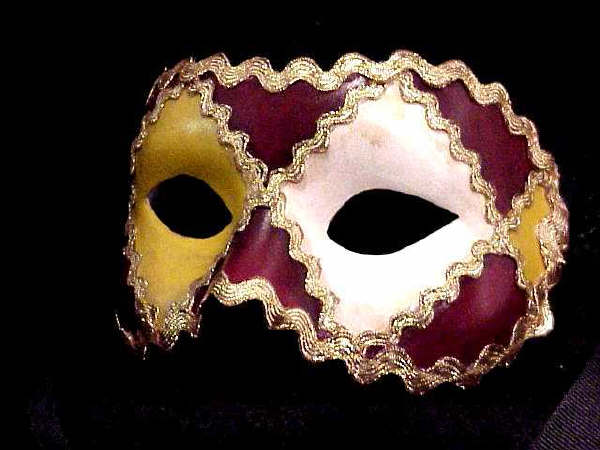| CHRISTMAS AT COURT 
MASQUES A masque was a festival or entertainment in which disguised participants offered gifts to their host and then joined together for a ceremonial dance. A typical masque consisted of a band of costumed and masked persons of the same sex who, accompanied by torchbearers, arrived at a social gathering to dance and converse with the guests. The masque could be simply a procession of such persons introduced by a presenter, or it could be an elaborately staged show in which a brief lyrical drama heralded the appearance of masquers, who, having descended from their pageant to perform figured dances, reveled with the guests until summoned back into their pageant by farewell speeches and song. The theme of the drama presented during a masque was usually mythological, allegorical, or symbolic and was designed to be complimentary to the noble or royal host of the social gathering. Most likely originating in primitive religious rites and folk ceremonies known as disguising, or mummery, masques evolved into elaborate court spectacles that, under various names, entertained royalty throughout Europe. During the 16th century the European continental masque traveled to Tudor England, where it became a court entertainment played before the king. Gorgeous costumes, spectacular scenery with elaborate machinery to move it on- and offstage, and rich allegorical verse marked the English masque. During the reign of Elizabeth I the masque provided a vehicle for compliments paid to the queen at her palace and during her summer tours through England. Under the Stuarts the masque reached its zenith when Ben Jonson became court poet. He endowed the form with great literary as well as social force. In 1605 Jonson and the scene designer Inigo Jones produced the first of many excellent masques, which they continued to collaborate on until 1634. Jonson invented the antimasque--also known as the false masque or the antic masque--and produced the first in 1609. It took place before the main masque and concentrated on grotesque elements, and provided a direct contrast to the elegance of the masque that followed. In later years the masque developed into opera, and the antimasque became primarily a farce or pantomime. After Jonson's retirement, masques lost their literary value and became mainly vehicles for spectacle. Masque entertainments in England ceased with the beginning of the English Civil Wars, and later revivals never equaled the originals. 
Backgrounds & page design by ForeverAmber |
 Free Forum Hosting
Free Forum Hosting